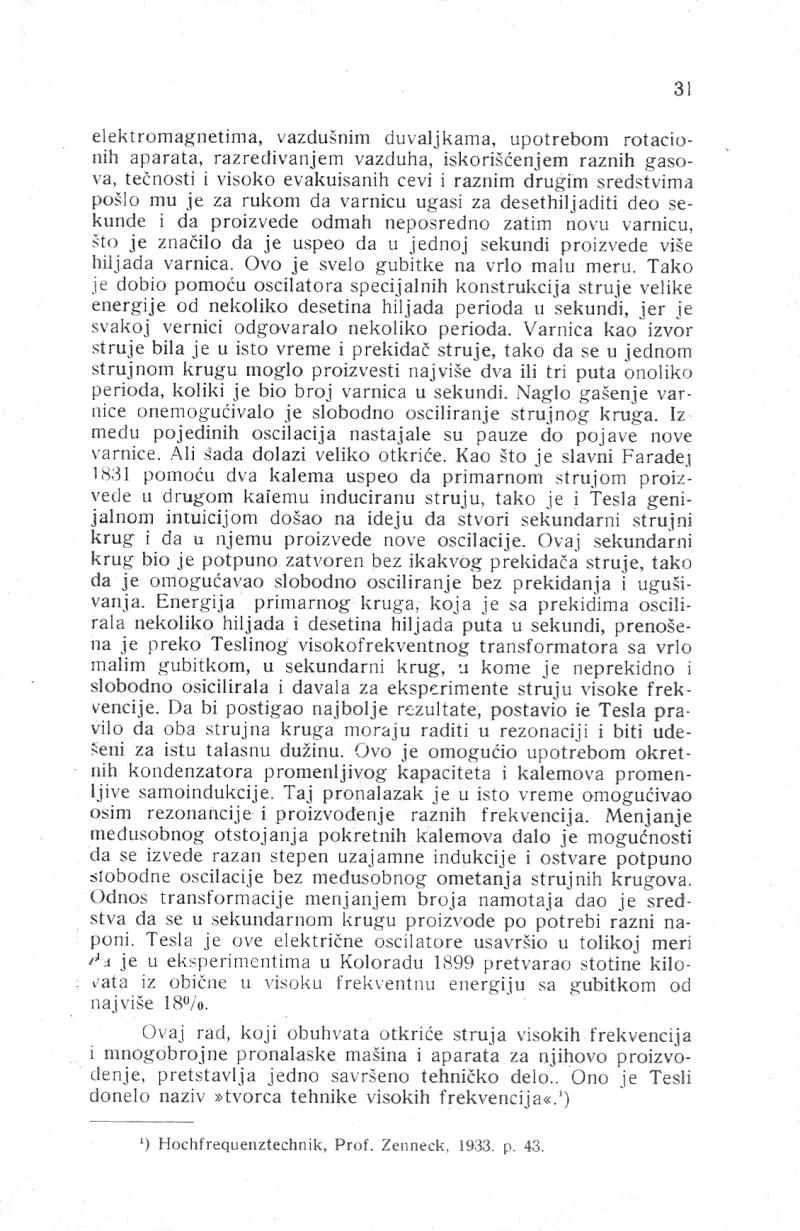
Nikola Tesla Books
electromagnets, air blowers, rotation apparatus, air dilution, utilization of various gases, liquids, highly evacuated tubes, and various other means, he managed to extinguish the spark for a tenth of a second and immediately thereafter produce a new spark. This meant that he succeeded in producing thousands of sparks in one second. This minimized losses to a very small extent. He achieved this with the help of specially constructed oscillators, generating currents of high energy with several tens of thousands of periods per second, as each spark corresponded to several periods. The spark served as both a current source and a current switch simultaneously, allowing the production of only two or three times the number of periods in a current circuit as there were sparks per second. The abrupt extinguishing of the spark prevented the free oscillation of the current circuit. Gaps between individual oscillations resulted in pauses until a new spark appeared. But now comes the great discovery. Just as the famous Faraday in 1831 succeeded in producing induced current in the second coil using primary current through two coils, Tesla, with brilliant intuition, came up with the idea of creating a secondary current circuit and producing new oscillations in it. This secondary circuit was completely closed without any current switch, enabling free oscillation without interruption and suppression. The energy from the primary circuit, which oscillated with interruptions several thousand and tens of thousands of times per second, was transmitted with very minimal loss through Teslaâs high-frequency transformer to the secondary circuit, where it oscillated continuously and freely, providing high-frequency current for experiments. To achieve the best results, Tesla established the rule that both current circuits must operate in resonance and be adjusted to the same wavelength. He accomplished this by using rotary capacitors with variable capacity and coils with variable self-induction. This invention simultaneously allowed resonance and the production of various frequencies. Changing the spacing between the movable coils provided the means to achieve different levels of mutual induction and achieve completely independent oscillations without mutual interference of current circuits. The transformation ratio by changing the number of windings provided the means to produce various voltages in the secondary circuit as needed. Tesla perfected these electric oscillators to such an extent that, in experiments in Colorado in 1899, he converted hundreds of kilowatts from ordinary to high-frequency energy with a loss of no more than 18%.
This work, which encompasses the discovery of high-frequency currents and numerous inventions of machines and devices for their production, represents a perfect technical achievement. It earned Tesla the title of the âcreator of high-frequency technology.â1)
______
1) Hochfrequentztechnik, Prof. Zenneck, 1933. p. 43.
